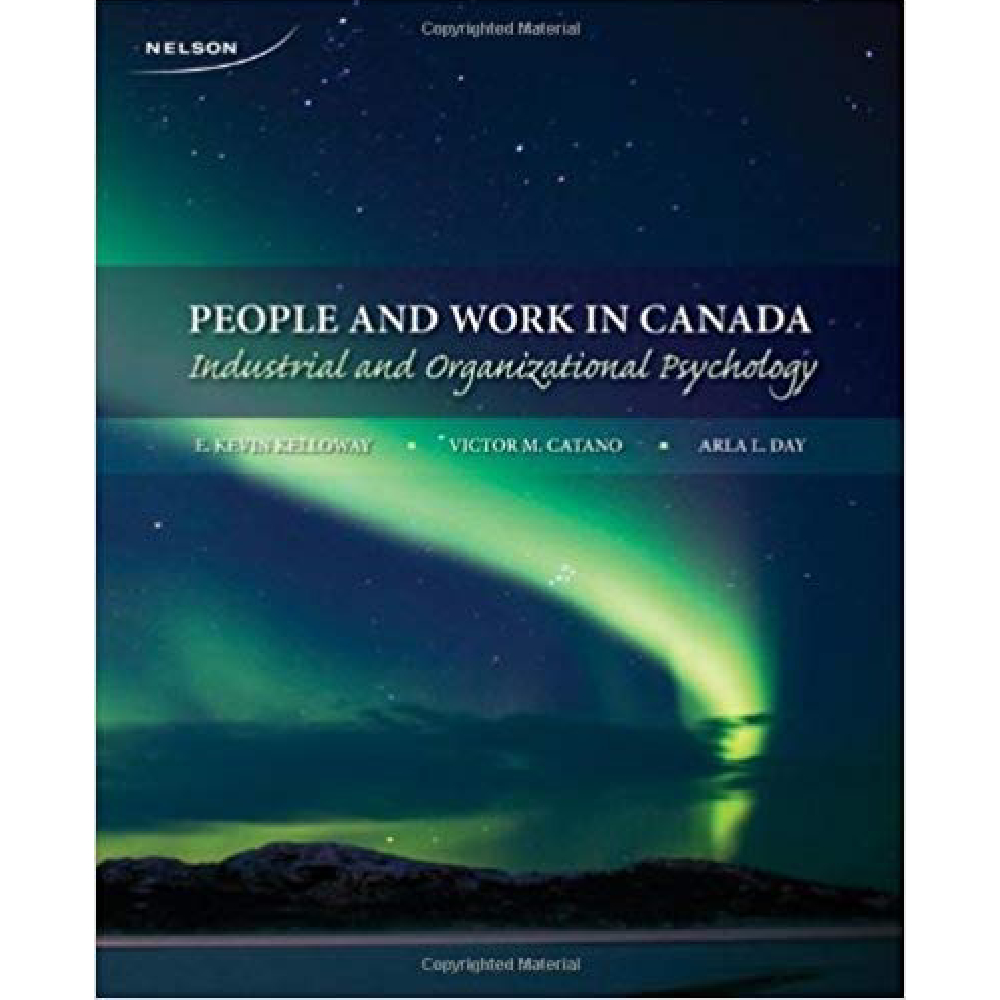People And Work In Canada Industrial And Organizational Psychology 1st Edition By Kelloway – Test Bank
$55.00
People And Work In Canada Industrial And Organizational Psychology 1st Edition By Kelloway – Test Bank
You will receive this product within 24 hours after placing the order
People And Work in Canada Industrial And Organizational Psychology 1st Edition By Kelloway – Test Bank
Chapter 11—Counterproductive Work Behaviour
MULTIPLE CHOICE
1. Which of the following best defines counterproductive work behaviours?
a. behaviours that negatively impact individual employees only
b. a set of voluntary behaviours that violate organizational norms
c. a set of non-intentional behaviours that decrease productivity
d. any specific, nonvoluntary behaviours prescribed by the organization
ANS: B PTS: 1 BLM: Remember REF: 298
2. One of Kamaya’s employees, Brad, has been fighting several flus and colds over the past few months. Although he is showing up for work, he has not been fully engaged in his work. How should Kamaya deal with this presenteeism issue?
a. She should change the reward system to ensure that his attendance is highly rewarded.
b. She should ignore it, because presenteeism usually isn’t a big issue.
c. She should reward Brad for the work he produces, and not for the hours he attends at work.
d. She should deduct his pay for any absenteeism.
ANS: C PTS: 1 BLM: Higher Order REF: 303
3. What is passive withdrawal from the workplace, in which employees do not perform to their fullest, known as?
a. presenteeism
b. absenteeism
c. psychological withdrawal
d. workplace property deviance
ANS: C PTS: 1 BLM: Remember REF: 304
4. A computer programmer allegedly placed a worm in the payroll software program that would destroy the payroll system if his name was deleted. Which of the following is this an example of?
a. production deviance
b. psychological withdrawal
c. employee theft
d. workplace property deviance
ANS: D PTS: 1 BLM: Higher Order REF: 305
5. Ginna has been seeing an increase in stealing from her kayak supplies company. According to Sandra Robinson and Rebecca Bennett’s (1995) typology, what is this behaviour classified as?
a. a minor, interpersonal, deviant workplace behaviour
b. a serious, interpersonal, deviant workplace behaviour
c. a minor, organizational, deviant workplace behaviour
d. a serious, organizational, deviant workplace behaviour
ANS: D PTS: 1 BLM: Higher Order REF: 305
6. We could use Mark Seabright and Maureen Schminke’s (2002) reasons behind acts of sabotage to justify each of the following people’s behaviour EXCEPT for which of the following?.
a. Camille, who suffers from deviant personality behaviour.
b. Quynn, who feels he has been treated unfairly by his employer.
c. Mark, who is trying to make his work easier to accomplish.
d. Jenny, who feels she lacks control and power at work.
ANS: A PTS: 1 BLM: Higher Order REF: 305
7. What is political deviance, such as showing favouritism, also known as?
a. Minor, interpersonal types of deviant workplace behaviour.
b. Serious, interpersonal types of deviant workplace behaviour.
c. Minor, organizational types of deviant workplace behaviour.
d. Serious, organizational types of deviant workplace behaviour.
ANS: A PTS: 1 BLM: Remember REF: 305
8. What does the textbook show about workplace violence and aggression?
a. Over 40 percent of US employees report experiencing psychological aggression.
b. Over 30 percent of US employees report being attacked with a knife, gun, or another weapon.
c. More than 50 percent of the reported violent work incidents in the US occur in manufacturing industries.
d. In the US older workers, those over 35 years of age, are more prone to physical violence and aggression.
ANS: A PTS: 1 BLM: Remember REF: 307
9. Although the rate may be inflated because it is based on self-report data, what is the approximate percentage of employees in the UK, Australia, and the US who label themselves as being bullied?
a. 0-5 percent
b. 10-20 percent
c. 40-50 percent
d. 60-70 percent
ANS: B PTS: 1 BLM: Remember REF: 308
10. Which of the following is the defining characteristic of predatory bullying?
a. the bully uses psychological harassment
b. the bully engages in physical aggression with the victim
c. the bully singles out an individual based on prejudiced attitudes toward a group
d. the interactions between bully and victim provoke each other to ever-increasing negative actions directed at each other
ANS: C PTS: 1 BLM: Remember REF: 308–309











Reviews
There are no reviews yet.